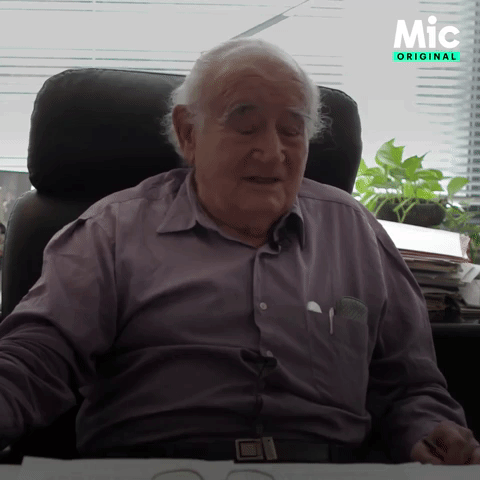In the polarizing political climate of 2018, social media companies are increasingly coming under fire for their part in creating echo chambers. While it’s no secret these platforms’ algorithms are designed to show us content we’ll find agreeable, users may still bump into posts and videos that challenge their views. But do these disagreeable posts stand any chance of changing opinions? Are they even looked at, or quickly glimpsed at and tossed aside?
To explore willingness to engage with disagreeable content, we conducted a political study of nearly 1,400 individuals from a demographically diverse, online panel1. Each survey respondent was shown three liberal, three conservative, and two non-political videos, for a total of eight. Respondents were instructed to watch as much or little of each video as they wanted to; they could immediately skip past one that didn’t interest them, or stick around and watch the entirety of it if they wished. They had full freedom and flexibility, much like when scrolling through a newsfeed on social media2.
For a little bit of context, here's a short clip from a liberal, non-political, and conservative video a participant may have seen.



We timed how long each video was watched and asked respondents a few questions about each piece of political content they saw. This gave us data on a total of 10,400 video interactions.
As respondents watched the videos, two types of behavior were most common. Respondents tended to either skip past a video quickly -- within 10% of the start in many cases -- or watch a video to its conclusion. So if viewers got past a certain subconscious threshold, they were likely to stick it out.


Going Beyond the Echo Chamber
Research shows that ideology and personal preference drive our choices in media consumption. With this in mind, we might expect that personal ideology would be one of the strongest factors driving the amount of time participants spent watching certain videos. Surely a liberal wouldn’t spend much time on political content produced by conservatives, and vice versa.
Surprisingly, ideology had no significant effect on viewership3. Political videos arguing liberal policies, for instance, garner nearly equal levels of viewership from liberal, moderate, and conservative individuals. This is also true for conservative and non-political videos. Individuals proved willing to move beyond the echo chamber and engage with opposing views.
Ideology did matter in one way. While respondents consumed roughly the same amount of liberal and conservative videos on average (50% and 52%, respectively), they tended to watch more of non-political videos (64%). There’s something about a cute animal or treehouse video that just sucks people in.


The selection of videos for this analysis was based on my subjective classification of their political leaning. It’s wholly possible individuals watching these videos had their own ideas for how liberal or conservative they were. To account for this, we also asked respondents to rate the ideological perspective of each video they saw, on the same scale we measured their own personal ideology4.
Respondents’ subjective assessment of a video’s ideology had no effect on the length of time for which it was viewed. Both liberals and conservatives watched all videos at indistinguishable rates, regardless of how ideological they thought they were. Videos that were perceived as more conservative, however, did draw slightly longer views from conservative respondents.


Credible Information Matters
The credibility of the videos influenced viewership more than any other variable. In fact, among videos perceived to be more credible, respondents watched 14% longer than videos perceived as unreliable. For this reason, content produced by Alex Jones’ Infowars and a video about the Pizzagate conspiracy theory -- both of which were deemed to be unreliable -- were skipped past faster than any others.
While all demographics gravitated towards credible information, it was more muted amongst millennials. Older generations watched video they viewed as credible 16% longer than those perceived as unreliable, while millennials were only motivated to watch credible videos 12% longer. This creates pretty wide gaps in viewership levels between millennials and older generations for more credible videos.


Opposing Political Content Can Shift Opinions
Overall, videos were unlikely to change the viewpoints of their viewers, as opinions were changed in 16% of instances.
Even though older generations were more willing to watch videos, they were significantly less likely to have their opinion changed. Millennials changed an opinion of theirs after watching a video 21% of the time, as compared to only 11% of the time for older generations.
We also examined the ideological classification of these videos to explore if liberal or conservative content was more effective in changing minds. Interestingly, both were equally likely to influence opinions. Just as ideology was less important in driving viewership, it plays a small if not insignificant role in changing minds. Liberals and conservatives can change each other minds, if they go about it the right way.
Again, credibility is the key here. More credible videos were 24% more likely to change viewers’ opinions. Despite a video coming from an opposing perspective, people were more open-minded and likely to listen if the source delivered information in a credible way.


Conclusion
So can disagreeable content on social media actually make a difference? Finding that partisans are willing to watch each other’s videos addresses the biggest concern that strong liberals and conservatives prefer to turn a blind eye to the other side. Social media algorithms may continue to prioritize like-minded content, but at least we'll entertain any opposing views that still find their way to our news feeds.
Content gets an even bigger boost in engagement if it appears credible. Our political study found that 53% of millennials and 29% of older generations were willing to change their view based on information from what they deemed a “very credible” source. Unfortunately, the line between credible and uncredible isn’t always clear, as ‘fake news’ on social media often looks pretty real. As many sites are working on addressing this problem, we hope for a speedy resolution. Our chances of breaking out of the echo chamber may depend on it.
Footnotes:
- Survey respondent selection was done through The Innovate MR, who pulled a random stratified sample. The sample was balanced across census variables, ensuring 50% splits of males/females and less than 35 year old / 35+ years and older, and a 33% split between conservatives, moderates, and liberals. Respondents were sent an initial email invite and non-responders received one reminder within a 48-72 hour window to maximize response. The survey was administered through Qualtrics. ↩︎
- Survey respondents could not skip past a video until after five seconds had passed, to prevent respondents from skipping a video before getting any exposure whatsoever to it. ↩︎
- This relationship was statistically insignificant, with p-value > .05 in every test conducted. ↩︎



